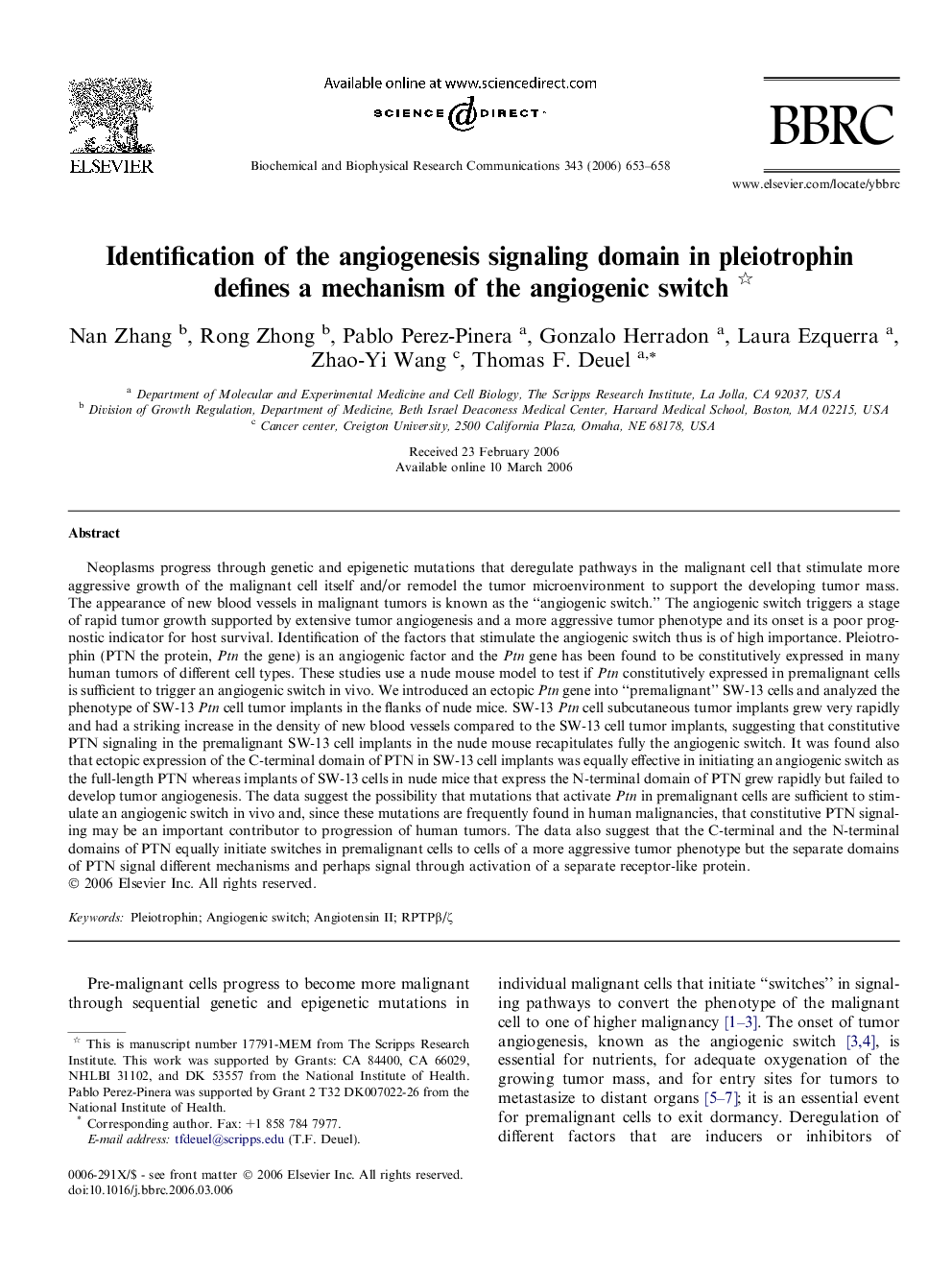| کد مقاله | کد نشریه | سال انتشار | مقاله انگلیسی | نسخه تمام متن |
|---|---|---|---|---|
| 1940034 | 1050772 | 2006 | 6 صفحه PDF | دانلود رایگان |

Neoplasms progress through genetic and epigenetic mutations that deregulate pathways in the malignant cell that stimulate more aggressive growth of the malignant cell itself and/or remodel the tumor microenvironment to support the developing tumor mass. The appearance of new blood vessels in malignant tumors is known as the “angiogenic switch.” The angiogenic switch triggers a stage of rapid tumor growth supported by extensive tumor angiogenesis and a more aggressive tumor phenotype and its onset is a poor prognostic indicator for host survival. Identification of the factors that stimulate the angiogenic switch thus is of high importance. Pleiotrophin (PTN the protein, Ptn the gene) is an angiogenic factor and the Ptn gene has been found to be constitutively expressed in many human tumors of different cell types. These studies use a nude mouse model to test if Ptn constitutively expressed in premalignant cells is sufficient to trigger an angiogenic switch in vivo. We introduced an ectopic Ptn gene into “premalignant” SW-13 cells and analyzed the phenotype of SW-13 Ptn cell tumor implants in the flanks of nude mice. SW-13 Ptn cell subcutaneous tumor implants grew very rapidly and had a striking increase in the density of new blood vessels compared to the SW-13 cell tumor implants, suggesting that constitutive PTN signaling in the premalignant SW-13 cell implants in the nude mouse recapitulates fully the angiogenic switch. It was found also that ectopic expression of the C-terminal domain of PTN in SW-13 cell implants was equally effective in initiating an angiogenic switch as the full-length PTN whereas implants of SW-13 cells in nude mice that express the N-terminal domain of PTN grew rapidly but failed to develop tumor angiogenesis. The data suggest the possibility that mutations that activate Ptn in premalignant cells are sufficient to stimulate an angiogenic switch in vivo and, since these mutations are frequently found in human malignancies, that constitutive PTN signaling may be an important contributor to progression of human tumors. The data also suggest that the C-terminal and the N-terminal domains of PTN equally initiate switches in premalignant cells to cells of a more aggressive tumor phenotype but the separate domains of PTN signal different mechanisms and perhaps signal through activation of a separate receptor-like protein.
Journal: Biochemical and Biophysical Research Communications - Volume 343, Issue 2, 5 May 2006, Pages 653–658